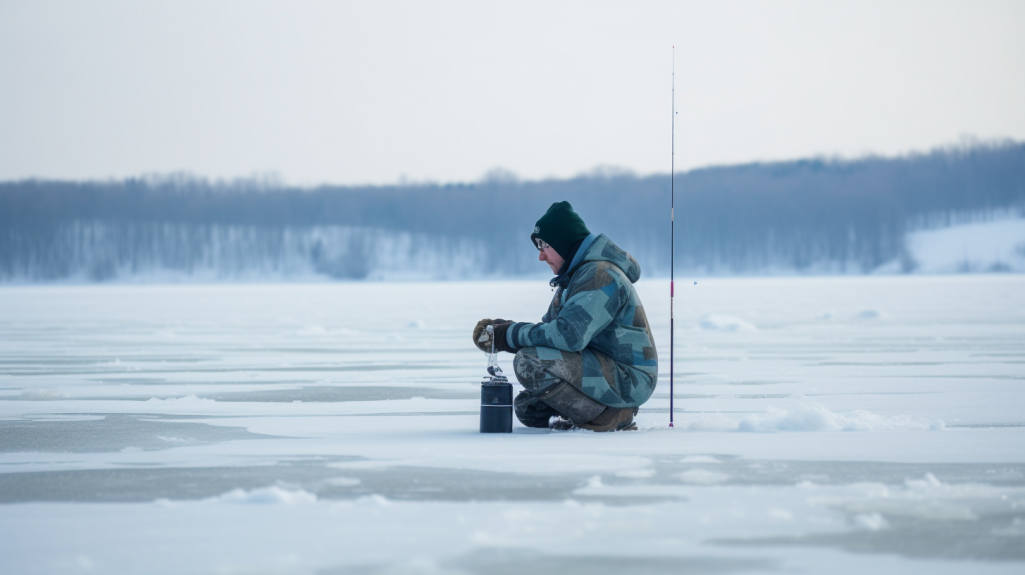In the vast, frozen expanses of the Nordic lands, where winter casts its icy spell over lakes and rivers, a unique and ancient tradition comes to life. Ice fishing, the art of catching fish through a hole drilled into a frozen water body, is not just a means of sustenance here; it’s a celebration of the outdoors, a communion with nature, and a testament to human ingenuity. In this article, we’ll explore the captivating world of ice fishing in the Nordic lands, delving into both its artistic allure and the scientific marvels that make it possible.
The Nordic Connection
Nordic countries like Sweden, Norway, Finland, and Iceland are synonymous with pristine landscapes and a deep reverence for nature. In these lands of the midnight sun and the Northern Lights, ice fishing is more than just a hobby—it’s a way of life deeply rooted in the cultural fabric. As the lakes freeze over and snow blankets the ground, enthusiasts, locals, and tourists alike flock to the frozen waters, armed with augers, fishing rods, and a spirit of adventure.
The Art of Ice Fishing
Ice fishing is an art form that demands patience, precision, and a profound understanding of aquatic ecosystems. As the angler drills a hole through the thick ice, there’s a sense of anticipation in the air—a silent dialogue between man and nature. The choice of fishing spot is crucial, guided by knowledge passed down through generations and a keen eye for subtle signs on the frozen canvas. Ice fishermen often create makeshift shelters, ingeniously designed to shield them from biting winds while providing a window into the aquatic world below.
The craft of luring fish beneath the ice involves a myriad of techniques, from using live bait to expertly crafted artificial lures. Each movement of the fishing rod, each twitch and pause, is a dance aimed at tricking the fish into biting. It’s a skill that transcends language, a silent conversation between the angler and the unseen creatures in the depths.
The Science Behind the Magic
Behind this seemingly simple act of drilling a hole and dropping a line lies a fascinating world of science. Ice fishing is a testament to the adaptability of life in extreme environments. Fish in icy waters have evolved unique physiological adaptations, such as antifreeze proteins, allowing them to survive in sub-zero temperatures. Understanding the behavior of these fish, their feeding patterns, and the influence of temperature and light levels is essential for a successful ice fishing expedition.
Moreover, modern technology has revolutionized the way ice fishing is approached. Underwater cameras, sonar devices, and fish finders provide anglers with real-time insights into the aquatic world beneath the ice. These tools not only enhance the fishing experience but also contribute to the conservation of fish populations by enabling catch-and-release practices and sustainable fishing methods.
The Thrill of the Catch
The moment when a fish takes the bait and the line tightens is a culmination of skill, knowledge, and a touch of luck. It’s a rush of adrenaline, a thrilling connection with a wild creature in its natural habitat. In the midst of the serene, frozen landscape, there’s a sudden burst of life—a tussle between the angler and the fish, a dance of strength and wits.
The joy of catching a fish through the ice goes beyond the tangible reward. It’s about the stories shared around a crackling fire, the camaraderie forged between fellow anglers, and the deep respect for the natural world. Ice fishing fosters a sense of stewardship, reminding us of the delicate balance of ecosystems and the importance of preserving these icy realms for generations to come.
Conclusion
In the Nordic lands, where winter weaves a tapestry of ice and snow, ice fishing stands as a testament to the resilience of both nature and humanity. It’s a harmonious blend of ancient traditions and cutting-edge technology, of artistry and scientific marvels. As the fire on water illuminates the frozen expanses, it serves as a reminder of the profound connection between humans and the natural world.
So, the next time you find yourself in the Nordic wilderness, don’t just see the frozen lakes as icy expanses. Look closer, and you’ll witness a vibrant tradition, an art form honed over centuries, and a celebration of life in the most unexpected of places—amidst the chill of winter, where fire meets water, and the spirit of adventure knows no bounds.

